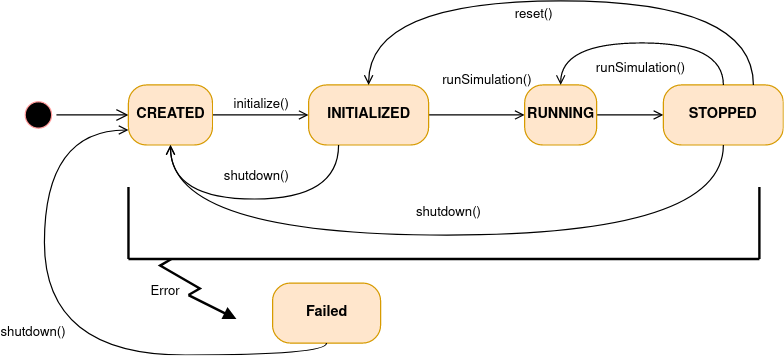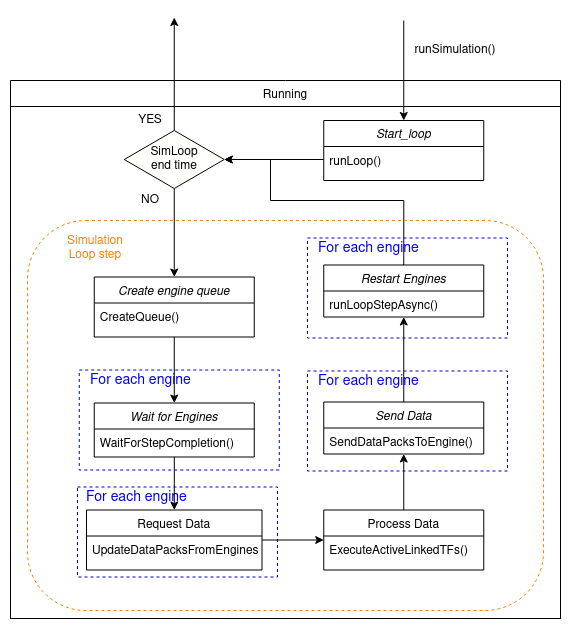Experiment Lifecycle¶
The lifecycle of an experiment consists of a series of states in which the different components in the architecture interact to initialize, run, reset and shutdown the simulation. In the diagram below is depicted the structure of an experiment lifecycle. The edges in the graph correspond to possible transitions in each state

The experiment lifecycle is managed by the SimulationManager, which is in charge of storing the current state of the experiment and process transition requests. Internally, the SimulationManager owns and run the Simulation Loop. By default, the Simulation Loop run by the SimulationManager is an FTILoop, used in fully synchronous experiments and about which most of the documentation is referred to. Alternatively, the SimulationManager can run an EventLoop for asynchronous experiments. The EventLoop documentation can be found under this page.
Depending on whether an FTILoop or an EventLoop is being managed by the SimulationManager, the internal structure of the states and transitions in the experiment lifecycle will be different. In the diagram below is depicted the internal structure of the Running state in the case of the FTILoop.

Finally, this page contains another diagram describing the actions performed by each architecture component in each of the lifecycle transitions. This diagram is also based on the FTILoop case.
Related Pages: